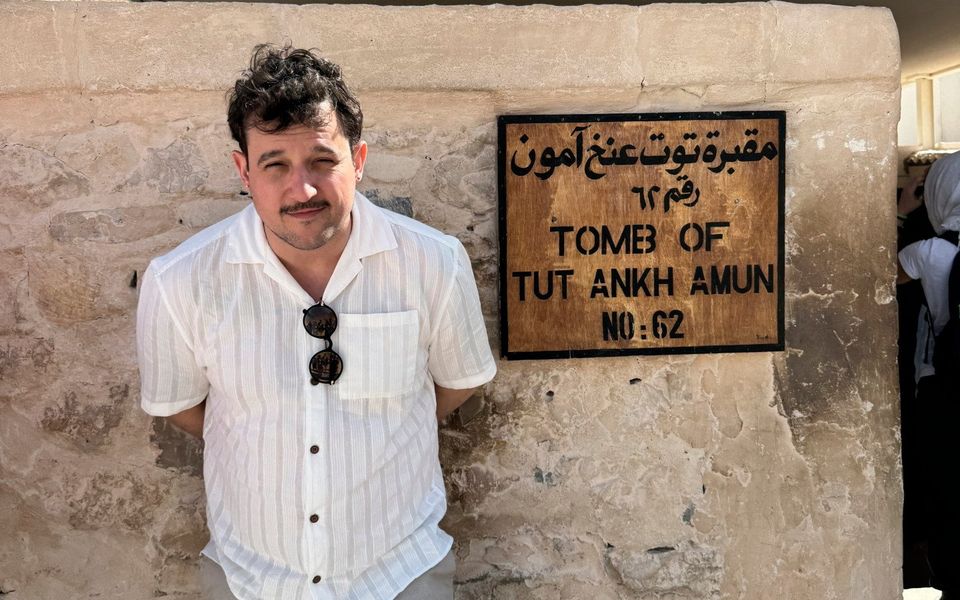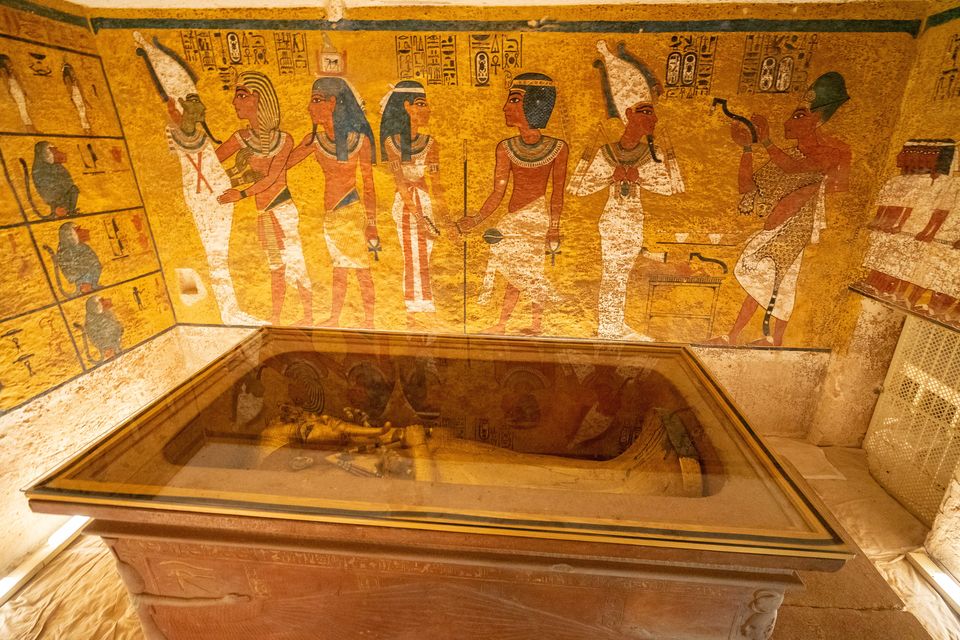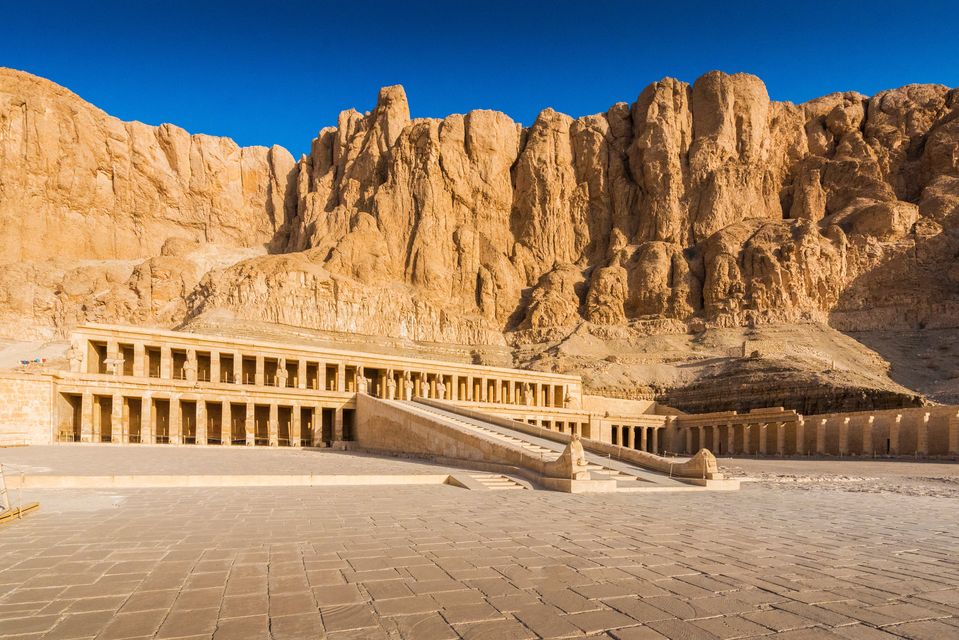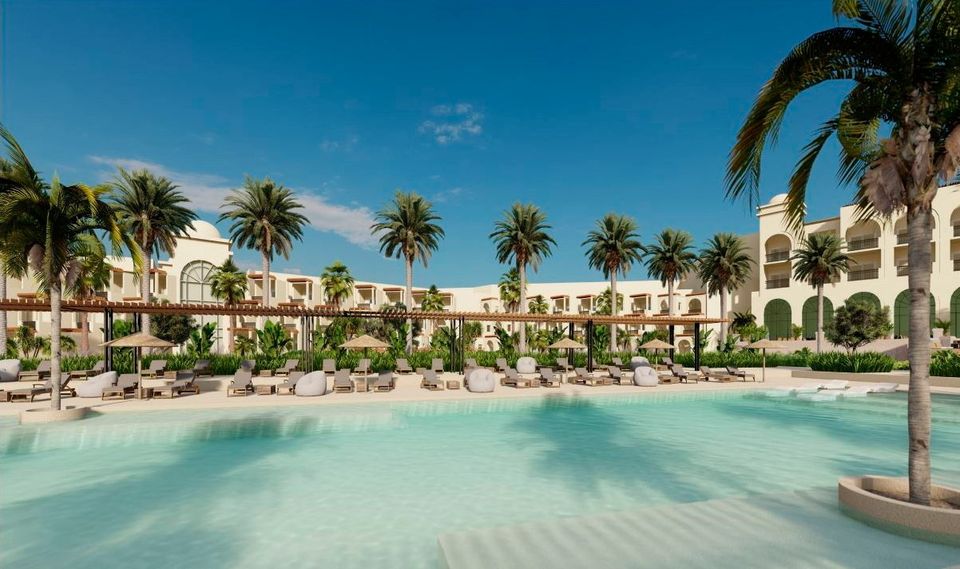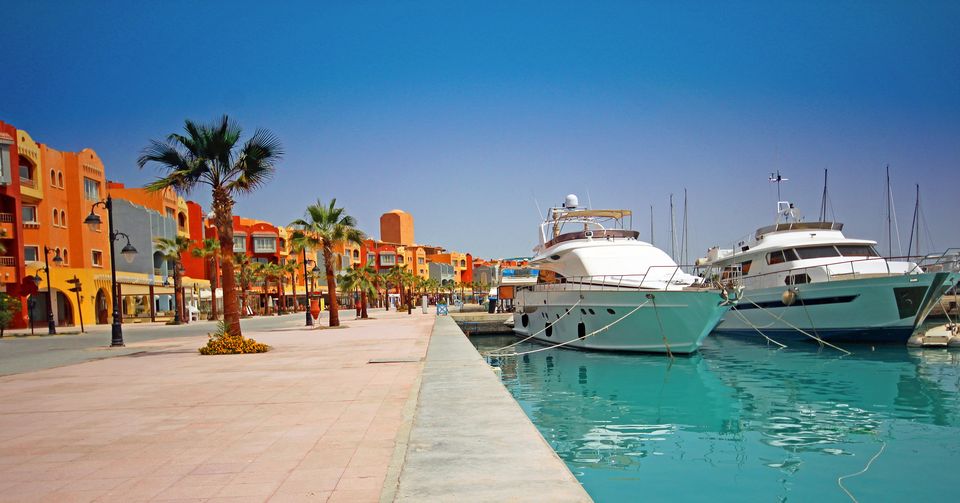Travel
Egypt’s sights, sands and sweet treats – ‘I would fly another 12-hour round-trip just to try them again’
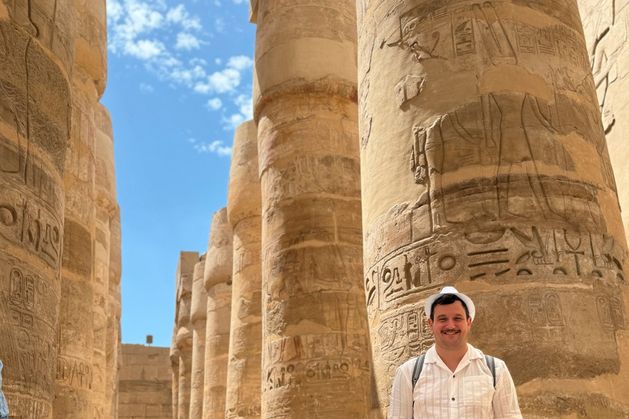
Sadly, I am not Timothée Chalamet, there was no Zendaya and I was not in Hollywood.
I was, however, in Egypt amid the captivating majesty of the Red Sea Hills, barrelling across the Eastern Desert — a part of the Sahara — en route to a Bedouin camp.
Ringed by mountains, we pushed on relentlessly through the golden waves of sand and into the unknown.
With ski goggles on and a scarf wrapped around my head to protect me from swirling sand in the air, it felt as if I was on another planet a million miles from Belfast.
After a bracing 45-minute buggy ride, we arrived at a Bedouin encampment at the foot of a gigantic mountain range locals call the Old Man of the Desert.
A Bedouin man with camels on the beach
Set up for tourists to learn more about Bedouin culture and to allow the nomadic people a chance to trade, the camp was spartan yet fascinating.
Among the makeshift structures which seemed to rise organically from the red earth was the smallest and most remote mosque I have ever encountered, a marvellous, beautiful little hut painted white and blue with a crescent moon atop its domed roof.
After learning about the Bedouin way of life and sampling their tea and herbal remedies, we returned to the buggies for a bone-rattling ride back to base.
We had flown direct with easyJet from Belfast to Hurghada, a resort city that has sprung up like an oasis along Egypt’s Red Sea Riviera.
The 40km strip of land along the south-eastern coast has come to rival its Sharm El-Sheikh, its more famous neighbour.
EasyJet recently launched a direct route to Egypt from Northern Ireland (EgyptAir also flies from Dublin Airport to Cairo), and the six-hour flight passes more quickly than one might think — or at least it did for me, but that might have something to do with my childhood obsession with the ancient Egyptians and my adult obsession with Frank Herbert’s Dune novels.
John Toner at the tomb of Tutankhamun
On the descent into Hurghada, travellers are treated to spectacular views of the coastline which that only serve to dial up the excitement even further.
After a short transfer from the airport, we arrived at the Serry Beach Resort, an elegant five-star hotel which would be our home for the next few days.
This hotel, found in the heart of Hurghada promenade oozes class and luxury. The combination of Arabian style, service and culture was stunning.
An all-inclusive resort offering high-quality food and drink in buffet and a la carte settings, Serry Beach was extremely impressive.
The world food offerings were good, but what really stood out were the local delicacies, particularly the sweet treats.
From gorgeous dried dates to baklava, and sticky basbousa to all sorts of things made with pistachio nuts, I would fly another 12-hour round-trip just to try them again with some strong Egyptian coffee.
On the second day, we made the long journey via road from Hurghada to Luxor, crossing the Nile and entering the Valley of the Kings.
A tomb in the Valley of the Kings
I had long dreamt of this place, and never thought I would see it, so the five-hour coach journey went by in a flash, even though I left my copy of Dune in the hotel.
We arrived in Luxor around midday and stopped on the banks of the River Nile to have lunch at the Steigenberger resort.
Munching on traditional flatbreads, vegetables, fish and rice, alongside an assortment of moussaka, hummus and taramasalata, the meal was divine as was the view.
After a brief and tranquil journey across the Nile on one of the many available tour boats, we continued on to our destination.
Golf buggies shuttle visitors up to the valley itself, and as you arrive it is difficult not to be awestruck by the majesty of the place.
We still don’t know how the Egyptians achieved many of their incredible feats, including the construction of the tombs, which are dug into the mountains.
Decorated with vibrantly coloured hieroglyphs and pictograms, it is mind-blowing to realise these structures are thousands of years old.
The Valley of the Kings
We visited the resting places of Rameses III, Rameses V and Rameses VI, who share a tomb, as well as Rameses I, whose enormous stone sarcophagus remains underground, with modern engineers still baffled over how it got there.
Next, it was down into the tomb of the boy king Tutankhamun, the most famous of the Egyptian pharaohs.
The discovery of his long-lost tomb in 1922 by the British archaeologist Howard Carter is the stuff of legend, and descending into the sepulchre felt like something out of an Indiana Jones movie.
His tiny, embalmed remains lay inside a glass box, with tourists queuing to catch a glimpse of him.
The artefacts found there as offerings to the gods, including his famed golden death mask, are sadly housed in museums elsewhere.
It’s quite an odd, unsettling thing to stand in the burial place of an ancient child alongside his mummified body, but an enthralling and fascinating experience all the same.
Leaving the tomb, I couldn’t help but wonder if I would fall victim to the famous fatal ‘curse’ which befell those who unearthed the grave alongside Carter in the 1920s.
I’m doing okay so far, I’m sure readers will be pleased to know.
John in Egypt
After we had arrived in Hurghada several days earlier, we visited Karnak Temple, a sprawling complex of ancient ruins and monuments to the long-dead rulers of Egypt.
At one point, I was able to stand in an offertory built by, and for, Rameses III to make offerings to his gods.
A carefully placed hole in the roof of the structure tracks the sun’s orbital path and is designed to coincide with the twice-yearly equinox, another mystery of Egyptian engineering.
I stood in the same building with the light shining on my face thousands of years on — a powerful experience to share with a pharaoh.
After an 11-hour round-trip in a minibus and a day of walking among graves and historic monuments, I was absolutely wiped out, so the beach day that followed the Valley of the Kings was extremely welcome.
Serry Beach Resort
Mahmya Giftun Island lies just a few miles from the Hurghada coast and offers a private, picture-postcard beachfront for sun-seekers.
It really does look like the desert island you imagined as a kid — golden sands, palm leaves for shade and not a cloud in the sky.
After a spot of spectacular snorkelling on a nearby coral reef, we returned to the hotel by boat for a buffet lunch, followed by a very welcome lazy afternoon.
I melted into the sun lounger for the rest of the day while occasionally dozing off between pages of Dune. Complete and utter bliss.
As we packed to leave the island and prepared for our flight later that evening, I couldn’t help but feel an affinity for this place I had so recently discovered.
This was my desert, my Arrakis, my Dune.
Marina, Hurghada, Egypt.
Get there
EasyJet flies from Belfast to Hurghada all year-round.
EasyJet Holidays offers seven nights at the five-star Serry Beach Resort in Hurghada on an all-inclusive basis from £1,093pp (€1285pp), including 23kg of luggage per person, transfers and flights from Belfast International.
John’s trip was hosted, and this story originally appeared in The Belfast Telegraph. Visit easyjet.com for more details.

